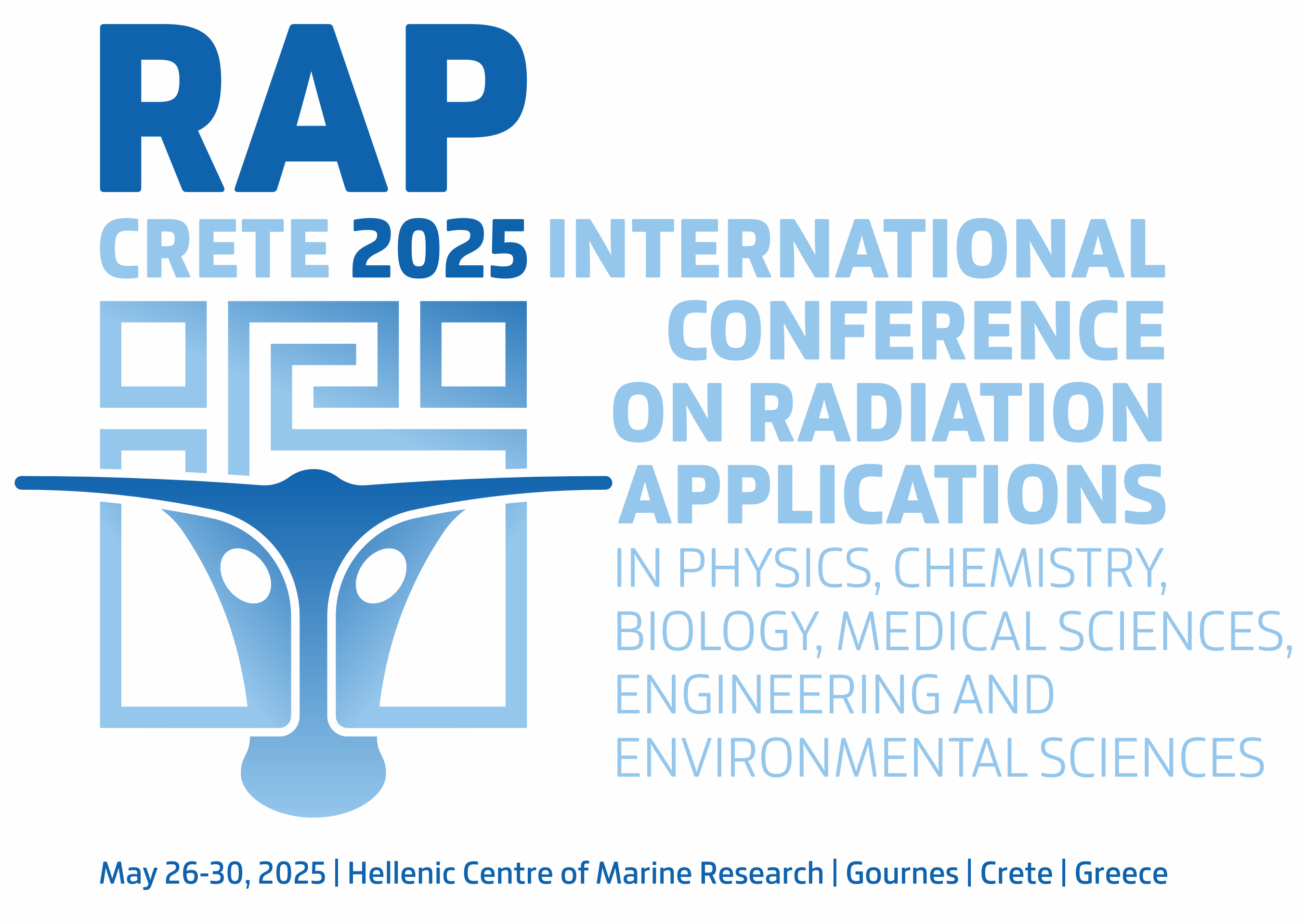Vol. 5, 2020
Radiation in Medicine
EFFECTIVENESS OF DIFFERENT BNCT-DRUG INJECTION METHODS
Vladimir Kanygin, Alphiya Tsygankova, Aleksandr Kichigin, Evgenii Zavjalov, Ivan Razumov, Tatiana Guselnikova, Anna Kasatovа, Roman Sibirtsev, Rinat Mukhamadiyarov
Pages: 33-37
DOI: 10.37392/RapProc.2020.09
Abstract | References | Full Text (PDF)
The BNCT-drugs (BSH and BPA) toxicity for an 8-10-week-old severe combined immunodeficiency (SCID) male mice outbred with SPF-status was studied. The possibility of increasing BPA (L-p-boron phenylalanine) and BSH (sodium salt of borocaptate) therapeutic dose was shown. The relationship between a safe therapeutic dose and the administration method of BPA was found. The intraperitoneal injection allows one to increase the dose of BPA at least twice – 700 mg/kg b.w, BSH – at least 8 times, 800 mg/kg b.w with intraperitoneal injections. The BPA intraperitoneal and intratumoral injections demonstrate higher results in comparison with intravenous administration. The highest and statistically significant concentration of 10В in the tumor was found for intraperitoneal injection of BPA for intratumoral injection of BPA – 27±5 μg/g (heterotopic tumors, P=0.95). The highest tumor/blood ratio for BPA was 7.5 for intratumoral administration in the point of 1h (heterotopic tumors). The maximum concentration of 10В with the introduction of BSH was with intravenous administration and was 8±3 μg/g (orthotopic tumors). The highest tumor/blood ratio was 9.5 for intravenous injection in 1h point (heterotopic tumors).
- Neutron Capture Therapy: Principles and Applications , W. A. G. Sauerwein, A. Wittig, R. Moss, Y. Nakagawa, Eds., 1st ed., Berlin, Germany: Springer-Verlag, 2012, ch. 6, pp. 366 – 531.
DOI: 10.1007/978-3-642-31334-9 - P. M. Busse et al., “The Harvard-MIT BNCT Program: Overview of the Clinical Trials and Translational Research,” in Frontiers in Neutron Capture Therapy, vol. 1, M. F. Hawthorne, K. Shelly, R. J. Wiersema, Eds., 1st ed., Boston (MA), USA: Springer, 2001, ch. 2, pp. 37 – 60.
DOI: 10.1007/978-1-4615-1285-1 - K. Skold et al., “Boron Neutron Capture Therapy for glioblastoma multiforme: advantage of prolonged infusion of BPA-f,” Acta. Neurol. Scand., vol. 122, no. 1, pp. 58 – 62, Jul. 2010.
DOI: 10.1111/j.1600-0404.2009.01267.x.
PMid: 19951268 - R. Henriksson et al., “Boron neutron capture therapy (BNCT) for glioblastoma multiforme: a phase II study evaluating a prolonged high-dose of boronophenylalanine (BPA),” Radiother. Oncol., vol. 88, no. 2, pp. 183 – 191, Aug. 2008.
DOI: 10.1016/j.radonc.2006.04.015
PMid: 18336940 - T. Yamamoto et al., “Current clinical results of the Tsukuba BNCT trial,” Appl. Radiat. Isot., vol. 61, no. 5, pp. 1089 – 1093, Nov. 2004.
DOI: 10.1016/j.apradiso.2004.05.010
PMid: 15308197 - R. Bergland, E. Elowitz, J. A. Coderre, D. Joel, M. Chadha, “A Phase 1 Trial of Intravenous Boronophenylalanine-Fructose Complex in Patients with Glioblastoma Multiforme,” in Cancer Neutron Capture Therapy, Y. Mishima, Eds., 1st ed., Boston (MA), USA: Springer, 1996, ch. 5, pp. 739 – 745.
DOI: 10.1007/978-1-4757-9567-7_105 - M. A. Garabalino et al., “Boron neutron capture therapy (BNCT) for the treatment of liver metastases: biodistribution studies of boron compounds in an experimental model,” Radiat. Environ. Biophys., vol. 50, no. 1, pp. 199 – 207, Mar. 2011.
DOI: 10.1007/s00411-010-0345-6
PMid: 21132507 - M. Suzuki et al., “Intra-arterial administration of sodium borocaptate (BSH)/lipiodol emulsion delivers B-10 to liver tumors highly selectively for boron neutron capture therapy: experimental studies in the rat liver model,” Int. J. Radiat. Oncol. Biol. Phys., vol. 59, no. 1, pp. 260 – 266, May 2004.
DOI: 10.1016/j.ijrobp.2003.12.018
PMid: 15093923 - M. A. Garabalino et al., “Boron biodistribution for BNCT in the hamster cheek pouch oral cancer model: combined administration of BSH and BPA,” Appl. Radiat. Isot., vol. 88, pp. 64 – 68, Jun. 2014.
DOI: 10.1016/j.apradiso.2013.11.118
PMid: 24360859 - K. Yokoyama et al., “Pharmacokinetic study of BSH and BPA in simultaneous use for BNCT,” J. Neurooncol., vol. 78, no. 3, pp. 227 – 232, Jul. 2006.
DOI: 10.1007/s11060-005-9099-4
PMid: 16557351 - R. F. Barth et al., “Neutron capture therapy of epidermal growth factor (+) gliomas using boronated cetuximab (IMC-C225) as a delivery agent,” Appl. Radiat. Isot., vol. 61, no. 5, pp. 899 – 903, Nov. 2004.
DOI: 10.1016/j.apradiso.2004.05.004
PMid: 15308165 - R. F. Barth et al., “Molecular targeting of the epidermal growth factor receptor for neutron capture therapy of gliomas,” Cancer Res., vol. 62, no. 11, pp. 3159 – 3166, Jun. 2002.
PMid: 12036929 - W. Yang, R. F. Barth, D. M. Adams, A. H. Soloway, “Intratumoral delivery of boronated epidermal growth factor for neutron capture therapy of brain tumors,” Cancer Res., vol. 57, no. 19, pp. 4333 – 4339, Oct. 1997.
PMid: 9331095 - A. R. Tsygankova et al., “Determination of boron by inductively coupled plasma atomic emission spectroscopy. Biodistribution of 10B in tumor-bearing mice,” Russ. Chem. Bull., vol.69, no. 3, pp. 601 – 607, Mar. 2020.
DOI: 10.1007/s11172-020-2805-8 - S. P. Hozo, B. Djulbegovic, I. Hozo, “Estimating the mean and variance from the median, range, and the size of a sample,” BMC Medical Res. Methodol., vol. 5, no. 13, pp. 13 – 23, Apr. 2005.
DOI: 10.1186/1471-2288-5-13А
PMid: 15840177
PMCid: PMC1097734 - R. Henriksson et al., “Boron neutron capture therapy (BNCT) for glioblastoma multiforme: a phase II study evaluating a prolonged high-dose of boronophenylalanine (BPA),” Radiother. Oncol., vol. 88, no. 2, pp. 183 – 191, Aug. 2008.
DOI: 10.1016/j.radonc.2006.04.015
PMid: 18336940


